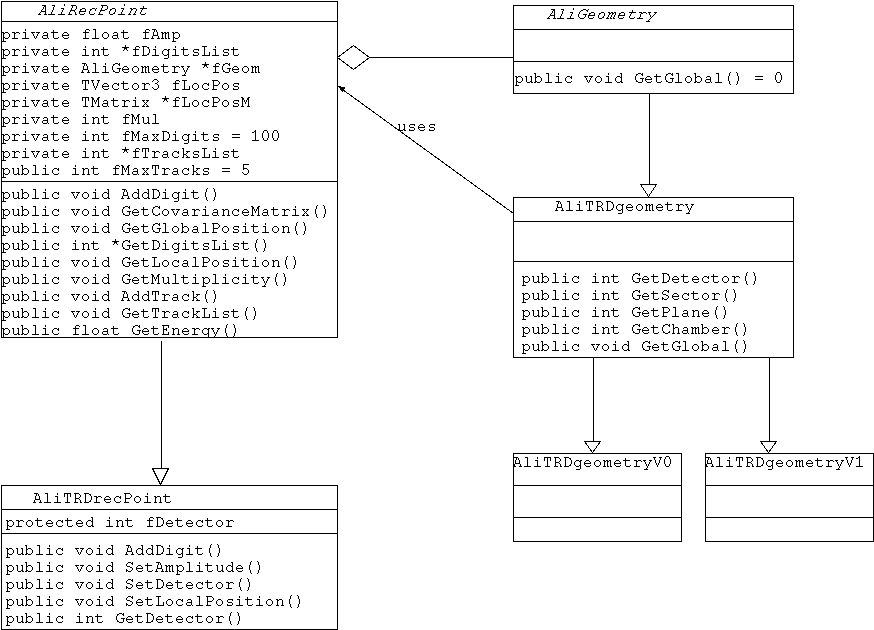General
The slow simulator includes a detailed simulation of the detector response. It creates electron cluster as hits in the drift volume and transforms them into digits. A schema of the code can be found here. For the slow simulation version 1 of the TRD (AliTRDv1) has to be selected in Config.C The following picture shows a display of the hits in the TRD: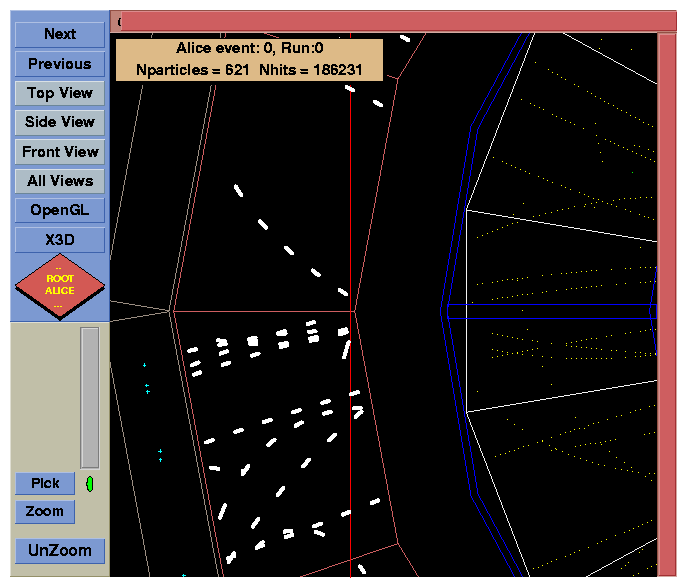
Generation of Hits
The StepManager() function in AliTRDv1 creates along the path of a traversing charged particle in the drift volume of the chambers electron clusters. The distance between the points where the creation of the primary delta-electrons takes place is set according to a parametrization of the Bethe-Bloch formula (see below). The data points are averaged values taken from GEANT. The plateau value is 1.55. For the number of produced delta-electrons at the minimum ionizing point a value of dN1/dx|min = 19.3/cm is used.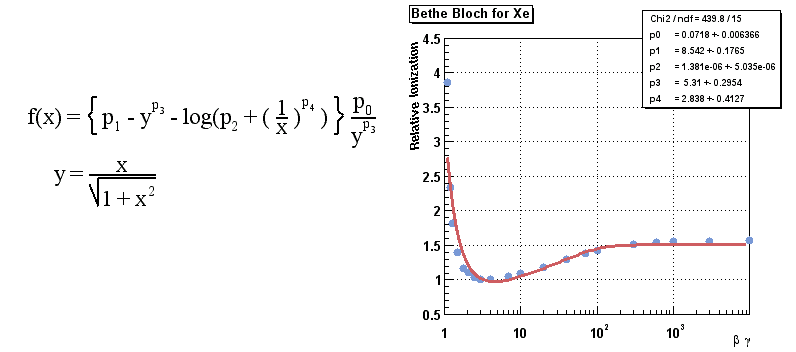
The energy distribution of the delta-electrons is extracted from GEANT3 (red curve in plot below, compared to a 1/E distribution, blue curve). The energy of one delta-electron is given by a random sample from this distribution subtracted by the first ionization potential (12.1 eV).
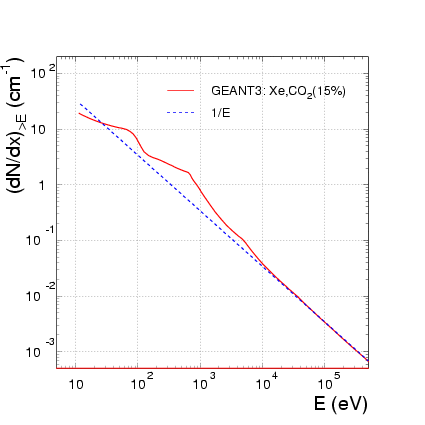
Each produced delta-electron in turn can create a number of secondary electrons by ionization. Their number is calculated by simply dividing the energy of the delta-electrons by the ionization energy of 22.04 eV. The average number of electrons produced by 3 GeV/c pions traversing 1 cm of gas is 282.
A.Andronic et al., NIM A519 (2004) 508 -- Data files for measurements and simulations
Digitization
The AliTRDdigitzer class transforms the hits from AliTRDv1 into digits. In this process the following effects can be included:| Effect | Default Status |
| Diffusion | ON |
| E x B | OFF |
| Absorbtion | OFF |
| Pad response (1-dim) | ON |
| Gas gain + gain fluctuations | ON |
| Electronis gain + noise | ON |
| Conversion to ADC values | ON |
All corresponding parameter can be customized (see the example macro slowDigitsCreate.C). The default parameter are defined in AliTRDdigitizer::Init(). These one-dimensional pad response functions (which correspond to each layer) decribes charge sharing in column direction:
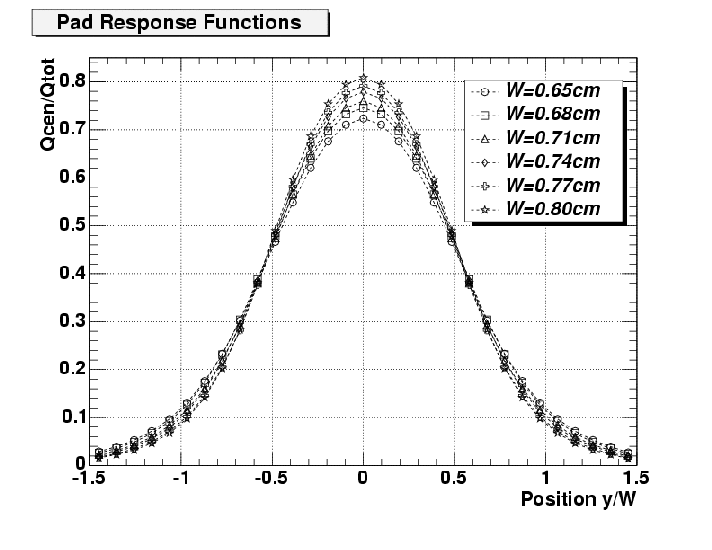
The fluctuations in the gas gain are described by an exponential distribution:

The output of the digitization procedure are objects of the type AliTRDdigit:
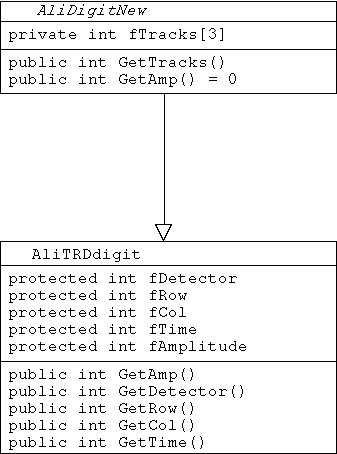
Since the data volume gets extremly large if a full event with realistic multiplicity is processed, the digits are internally stored in a compressed data structure, following a scheme invented by Marian for the TPC. The class AliTRDdigitsManager provides the interface through which the digit objects are stored and reconstructed. It also manages the dictionary between Monte Carlo tracks and digits.
Clustering
The class AliTRDclusterizerV1 provides a clustering algorithm that looks in each timebin for local maxima in the charge distribution in row- column-direction. Merged cluster are separated by an unfolding algorithm. There is no clusterfinding done in time-direction. The example macro slowClusterCreate.C demonstrates how to do the clustering. The resulting space points are stored as AliTRDrecPoint objects: